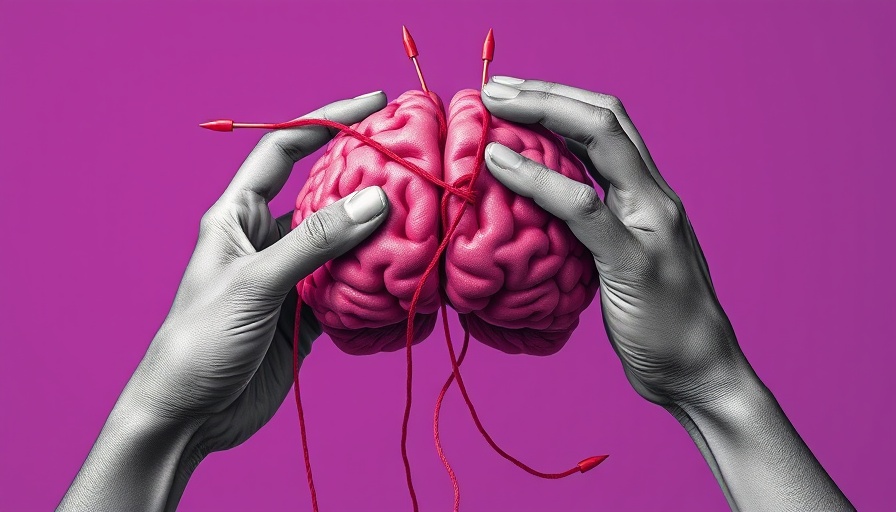
Unlocking the Power of Creativity: A Lifeline for Brain Health
Amid the hustle and bustle of daily life, it’s easy to brush off creative hobbies like painting, dancing, or even gaming as mere distractions. However, recent research reveals a compelling narrative: these passions wield the extraordinary ability to keep our brains youthful. A groundbreaking study involving over 1,400 participants has illuminated the profound impact that diving into creative pursuits has on brain aging, likening its importance to diet and exercise.
What the Research Tells Us: A Scientific Breakthrough
In the study spearheaded by the Global Brain Health Institute at Trinity College Dublin, researchers analyzed the brain activity of both expert and novice creatives, such as musicians, tango dancers, and visual artists. Utilizing a “brain clock” model, they discovered an astonishing fact: those engaged in regular creative endeavors exhibited younger brain ages—up to seven years younger, on average—compared to their non-creative counterparts. Ultimately, even casual hobbyists who participated in short training sessions (like learning a video game) experienced a reduction in their brain age by two to three years.
The Mechanisms Behind Creativity and Brain Health
The results open new avenues for understanding how creativity acts upon the brain. According to researchers, engaging in creative activities enhances communication between different brain regions, leading to better processing and organization of information. Notably, creativity seems to bolster connectivity in areas critical for memory and decision-making, like the prefrontal cortex and hippocampus. As these areas are often the first to deteriorate with age, maintaining them could have a profound impact on overall cognitive health.
Bridging the Gap: Creativity as a Tool for Longevity
What’s particularly heartening about these findings is that you don’t need to be a trained expert to reap the benefits of creativity. Carlos Coronel, a lead researcher, emphasized that anyone can cultivate creativity, regardless of skill level. The emotional rewards from creative expression, such as reduced stress and increased emotional regulation, further amplify its benefits. Therefore, creativity should be considered an integral aspect of self-care, just like physical exercise or a nutritious diet.
Finding Time for Creative Pursuits: A Gentle Approach
For many women balancing family and professional commitments, the notion of adding another activity to their schedule might feel overwhelming. However, research suggests that even dedicated time blocks can foster creativity: allocating just 30 minutes a week can yield significant benefits. Whether you choose to paint, write, or dance, the key is to engage with these activities joyfully, enabling you to embrace the changes in your brain without feeling pressured.
Move and Groove: Practical Tips to Ignite Your Creativity
So how can you weave creativity into your everyday life? Start with something simple that piques your interest. Try out a new recipe, engage in crafts, or explore creative writing. The idea is to tap into your imagination, express your thoughts, and allow your creativity to flourish—it need not be perfect. If inspired, consider local activities that encourage creativity, such as joining a dance class or participating in a community art project.
Encouragement from Your Peers: The Strength of Community
The beauty of creative hobbies is not just their individual benefits but their impact on social connections. By engaging in these activities alongside others, you foster communication and camaraderie, further enriching your experience. Joining local groups or inviting friends to share in your creative journey can amplify these effects, creating a supportive environment where everyone thrives.
Final Thoughts: Cultivating a Lifelong Passion for Creativity
Embracing creativity goes beyond personal fulfillment; it has lasting implications for brain health and aging. As we nurture our passions, we simultaneously foster resilience within ourselves—an invaluable asset as we navigate life’s challenges. Whether through painting nights or spontaneous dance parties in the living room, let your creativity take flight. This is not merely a hobby; it is an investment in your future.
To explore more about maintaining brain health, consider exploring local classes or workshops that incorporate creative elements into everyday practices. Remember, the best time to start creating was yesterday; the second best time is now!
 Add Row
Add Row  Add
Add 




Write A Comment